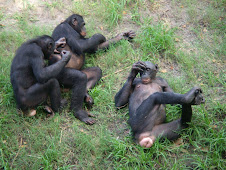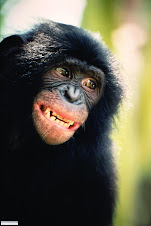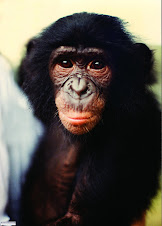 Showing behemoth tree skeletons left behind after felling and torching a patch of forest, this photograph illustrates "slash and burn" agriculture. The ash enriched soils support a diverse harvest of corn, peanuts, manioc, yams, beans, okra, peppers, squash, amaranth, and bananas.
Showing behemoth tree skeletons left behind after felling and torching a patch of forest, this photograph illustrates "slash and burn" agriculture. The ash enriched soils support a diverse harvest of corn, peanuts, manioc, yams, beans, okra, peppers, squash, amaranth, and bananas.One of the interesting facts about monkeypox was that the primary cases were mostly children between five and ten years of age. This is the age of boys too young to hunt who accompanied their sisters and the village women to the fields to work. Besides planting, weeding, chopping firewood and harvesting, they also protected the crop from marauding pests, such as baboons and wild pigs.
To occupy their time, and because they were hungry, the young boys would learn life skills by hunting the small mammals, mostly rodents that lived in the vicinity. Mostly, the captures were made by the clever use of snares, traps, and nets. The catch would be butchered, cooked, and eaten out in the field by the boys and girls. The agricultural areas seemed to be the interface between some animal host carrying the monkeypox virus and humans. What was this animal host?
Photo by D. Messinger













1 comment:
Hi Delphi. News on the drug ST-246from SIGA Technologies. Remember that it has been published to cure monkeypox (another orthopox virus) too.
"Health and Human Services' (HHS) request for proposal for 1.7 million courses of a smallpox antiviral for the Strategic National Stockpile was found to be in the competitive range."
http://money.cnn.com/news/newsfeeds/articles/globenewswire/168036.htm
Guillaume
Post a Comment